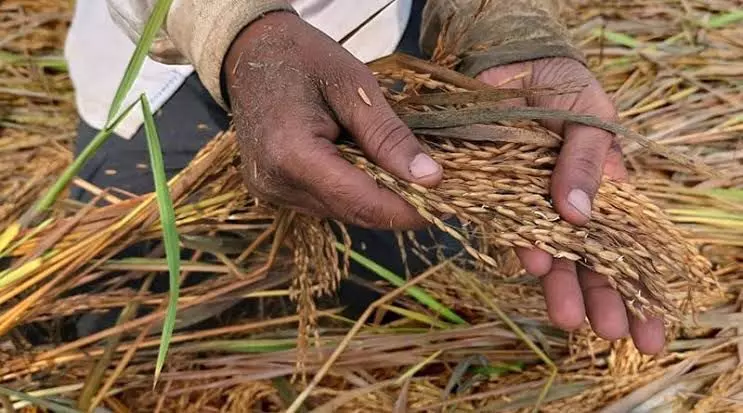Unseasonal rains ruin Telangana crops, state assistance falls short
Hailstones, strong winds, and rains have proved to be a bad combination for crops as they have been partially or completely damaged
By Kaniza Garari
Hyderabad: Four long spells of unseasonal rains in the summer months of 2023 have damaged winter crops and fruit cultivation in Telangana. Agriculture and horticulture in the state have suffered as the unseasonal rains from March have wreaked havoc.
Hailstones, strong winds, and rains have proved to be a bad combination for crops as they have been partially or completely damaged.
Damages are of several types
The damage to crops in March was caused due to hailstorms that broke weak stems and flowers. It has also been noted that some of the crops didn’t show the damage immediately but over a week to 10 days they withered away.
In the case of mango fruit, the damage was not immediate but after a week. The yield was damaged by worms and the hail also knocked out most of the small fruits.
Rains in the last week of April in different districts affected rice crops. Harvested paddy was washed away in some cases. In the case of others who were awaiting harvest, the stalks were broken due to the strong winds and hail.
Only first spell damage assessed
Telangana government officials estimate that the first long spell in the month of March has caused damage to 1.51 lakh acres of land. During this time, Chief Minister K. Chandrashekar Rao toured the districts and went to Khammam, Mahabubabad, and Warangal to assess the damage. A compensation of Rs. 10,000 per acre was announced for the farmers.
Kiran Vissa, the co-founder of Rythu Swarajya Vedika, said, “The relief announced by the government is based on the losses incurred in one spell of rains. There have been more than one this year. While a few district collectors have assessed the water damage, it is for the government to recognise and accept it. After that, the farmers can be reimbursed. Presently, the claim of the damage in February 2022 is being reimbursed to farmers. Last year also there were unseasonal rains in February and that too had caused damages.”
Need to strengthen disaster relief, crop insurance scheme
In the Disaster Management Act, there are guidelines to provide relief to farmers for crop damages. These yardsticks are in place which requires a government order for implementation.
Those who suffer more than 33% loss are to be compensated. Vissa explained, “It is also important to note that all landowners are not farming. There are tenant farmers in many farms and they also need to be compensated for the losses.”
Crop insurance is another way to reimburse the farmers. While the state has not yet formulated its crop insurance scheme, it is trying to push for relief as and when the damage occurs. Vissa explained, “Damage in agricultural lands is during summers and the rainy season. State crop insurance schemes will provide them protection and not push them into the circle of debt. Other states like Jharkhand, Gujarat, and Himachal Pradesh have state schemes that provide protection to farmers.”
Way forward with climate change
Governments need to gear up to protect their food growers as the intensity of the climate crisis varies from season to season. Short-term relief in terms of disaster relief and crop insurance can help them mitigate their losses. There is also a need to look at long-term solutions in terms of shifting from one crop to multiple crops which will make them sustainable. This will go a long way in dealing with the climate crisis. Presently, 85% of land in Telangana has cotton and rice but the need is to cultivate multiple crops. This shift will require a proper infrastructure for storage and distribution in the market. It will mean creating the space for the farmers to store their products safely and later distribute them in the market.